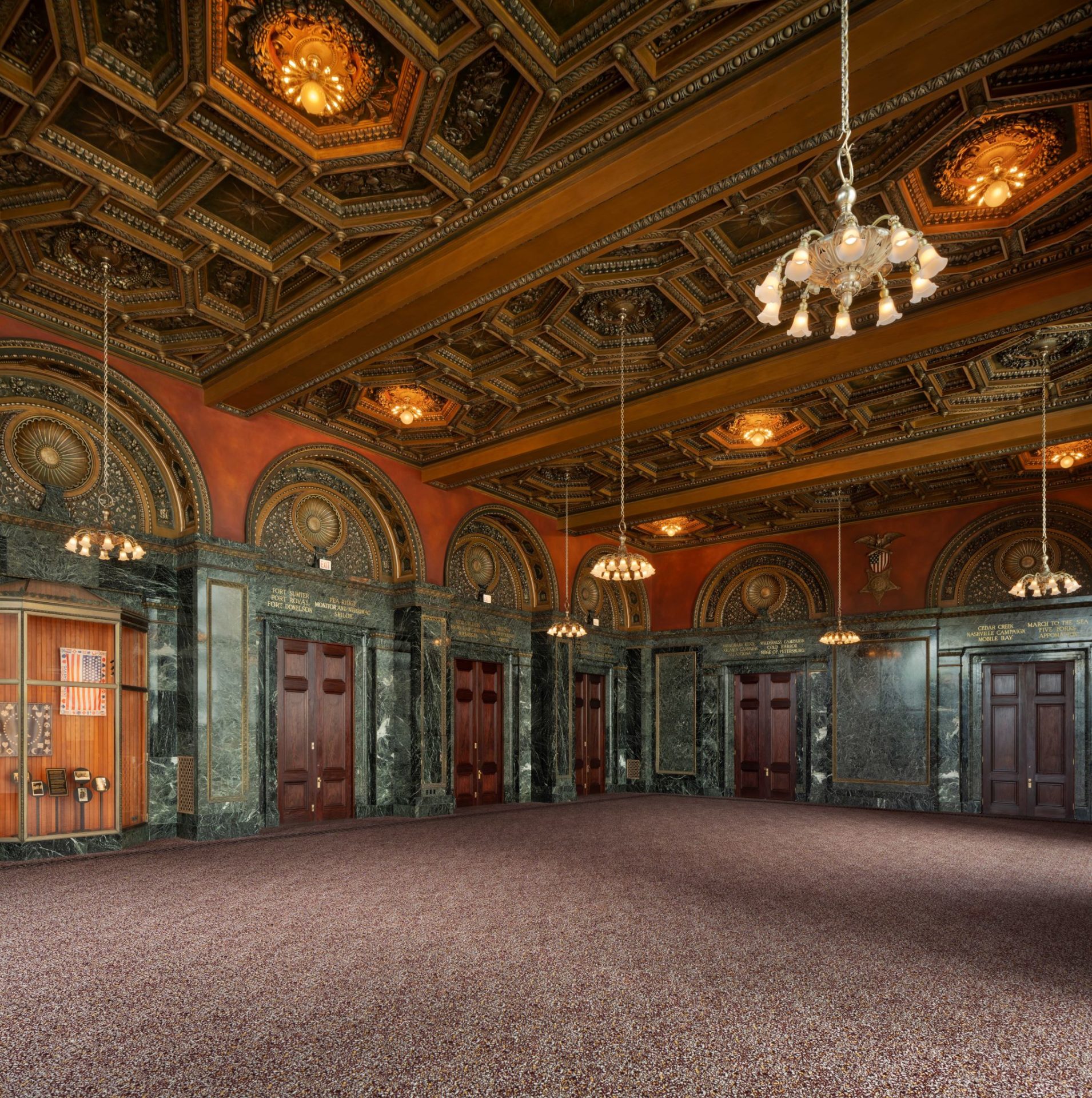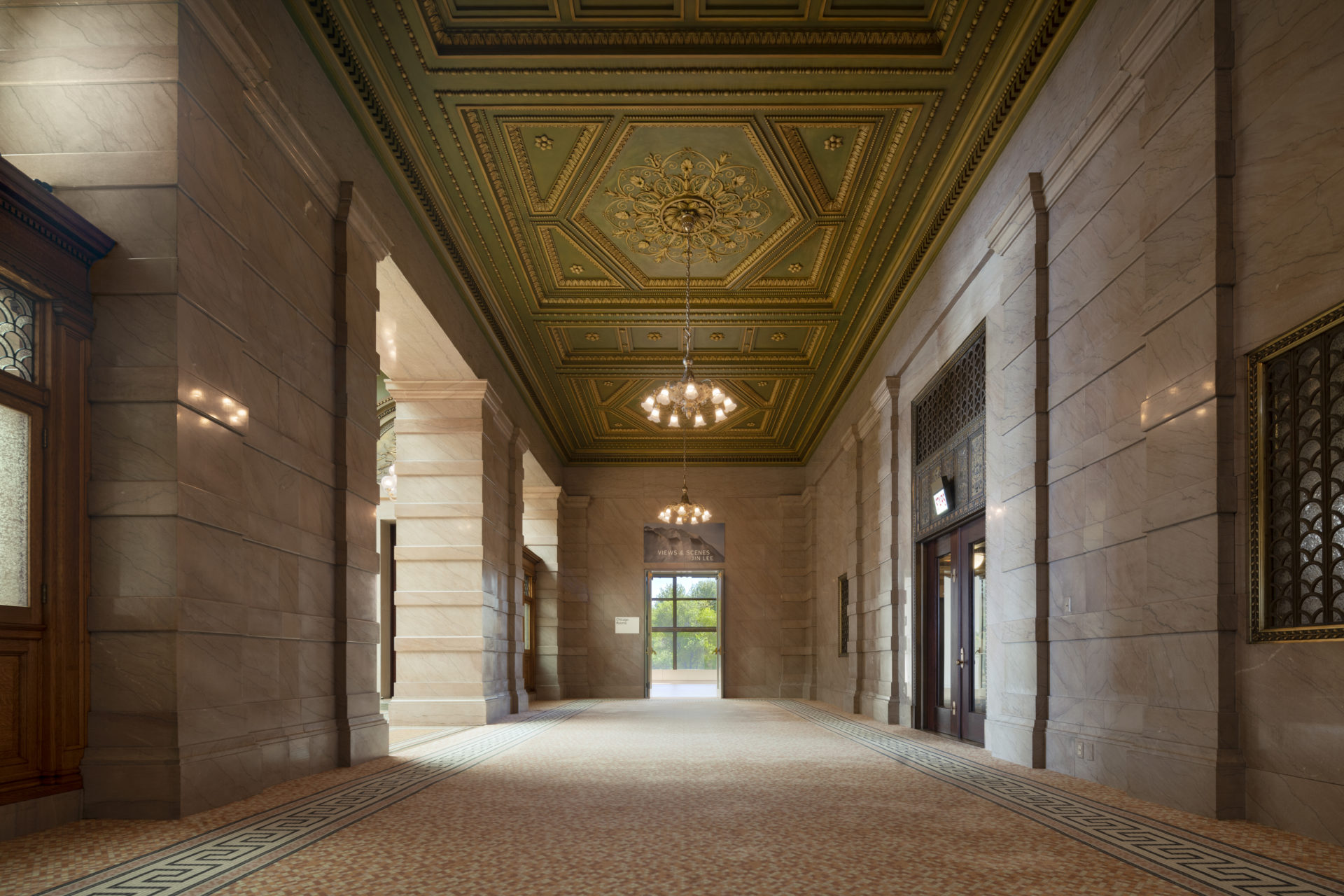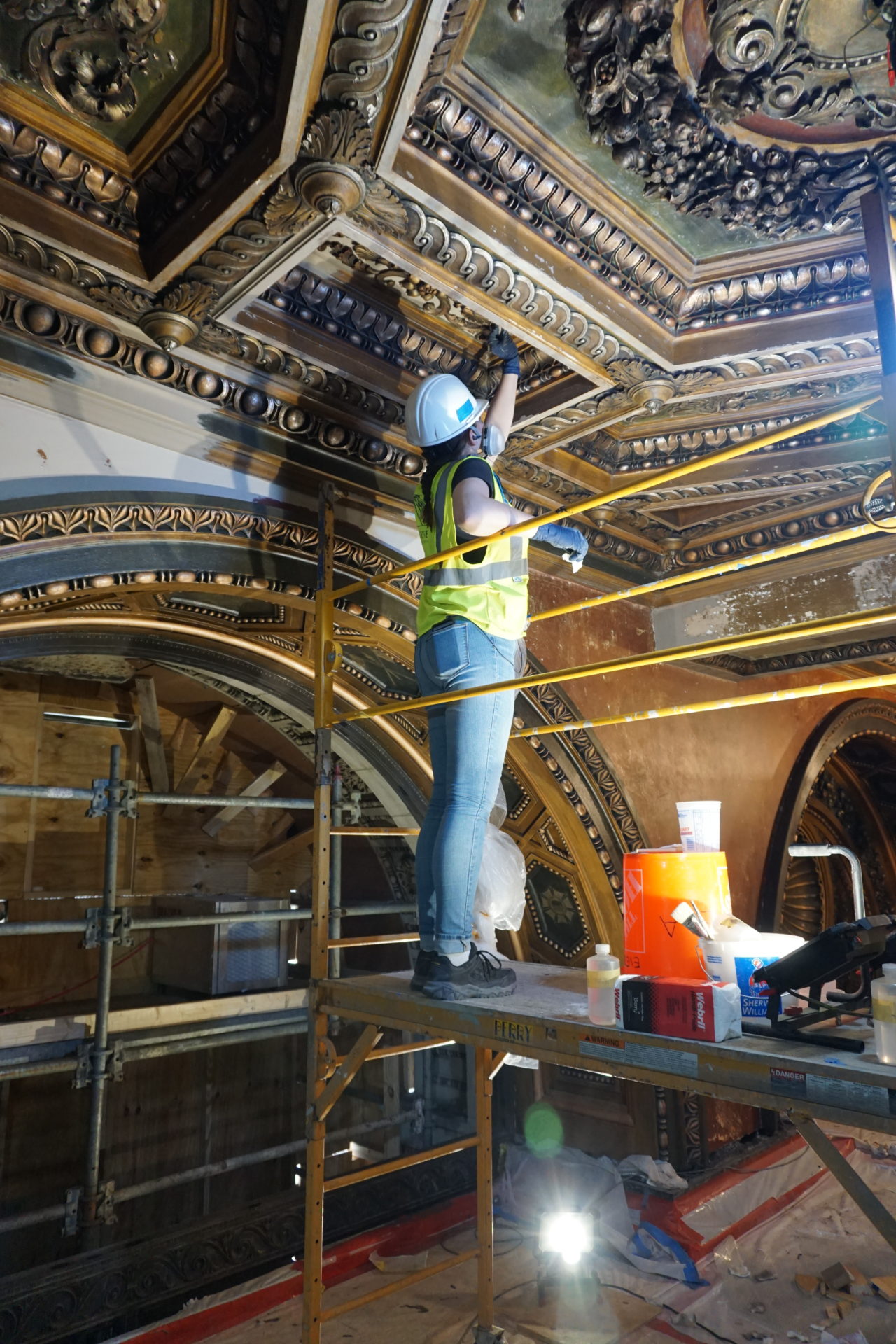2022 Landmarks Illinois Richard H. Driehaus Foundation Preservation Award for Restoration
The Grand Army of the Republic (GAR) Rooms, designed by Louis Comfort Tiffany and located of the 2nd floor of the National Register-listed and locally landmarked Chicago Cultural Center, were meticulously restored by dozens of conservators led by Harboe Architects and Berglund Construction. The project took over two years to complete and was funded thanks to a generous $15 million gift from an anonymous donor to the City of Chicago.
The restoration team used Exacto blades, acetone and cotton pads to reveal original painted surfaces and original aluminum leaf on decorative plaster elements was conserved. The restoration of GAR’s Rotunda — the Healy & Millet-designed art glass dome spanning 40 feet in diameter — involved the cleaning and recaming of 145, double-curved panels containing 62,000 pieces of glass. Missing bronze light fixtures were also recreated using detailed historic photographs and modern 3D-printing technology. Blocked up in the 1930s, infill above the dome was replaced with a modern glass dome cover, protecting the art glass dome below and allowing natural light to shine through the once again. Historic cabinetry and 14-foot tall historic wood doors were repaired and restored.
(Photo credit: Tom Rossiter)




